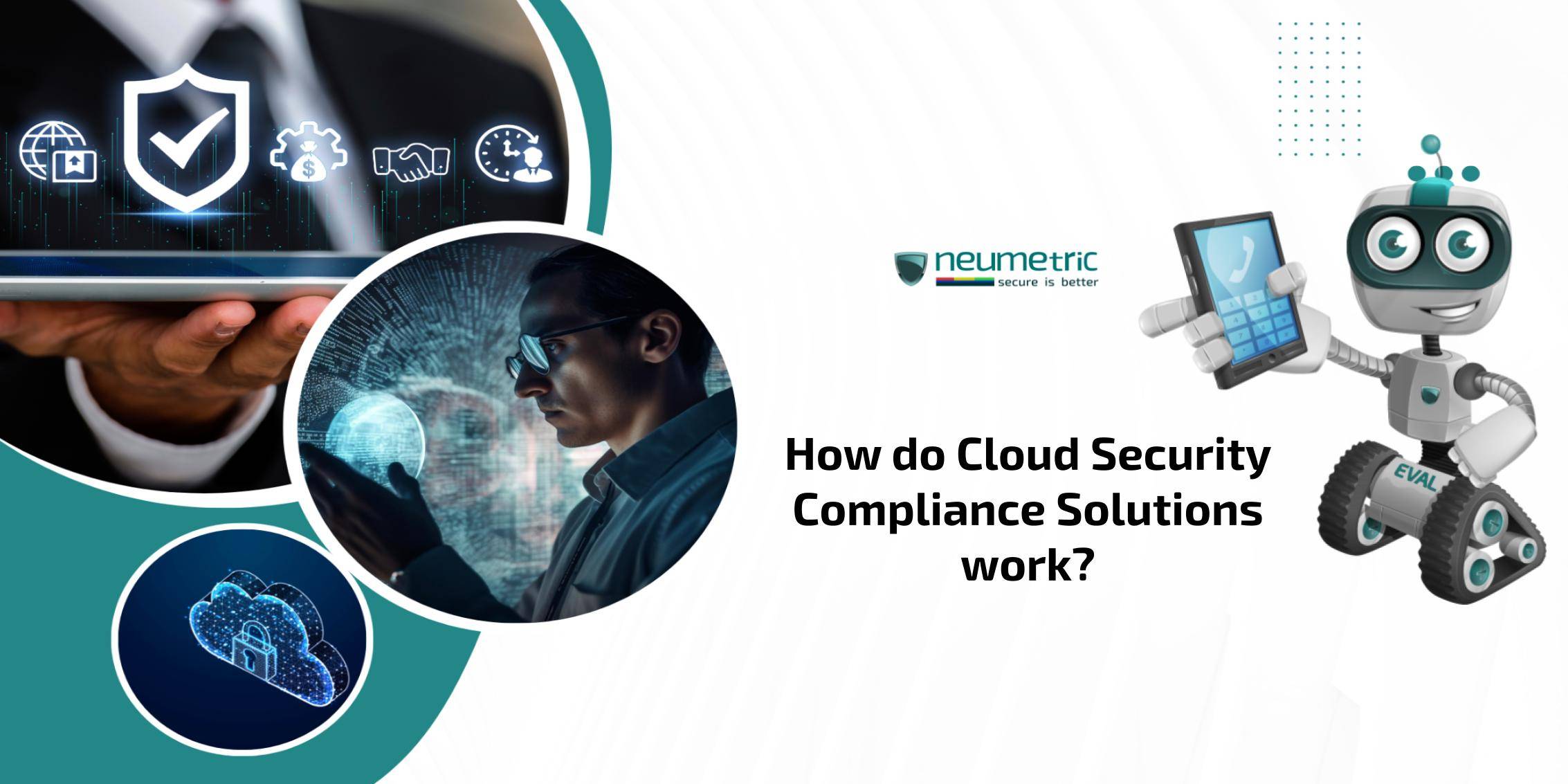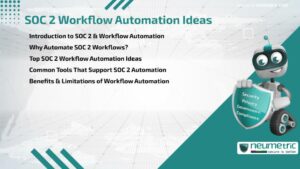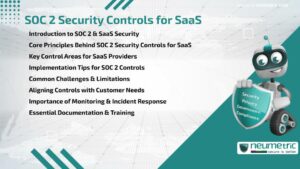Table of Contents
ToggleHow to perform Cloud Security Compliance Assessment?
Introduction
Cloud computing has become an indispensable facet of modern business operations, offering unmatched scalability, cost-effectiveness & agility. However, leveraging the cloud introduces new security considerations. Sensitive data housed within cloud environments necessitates robust security measures to mitigate the ever-present threat of breaches & unauthorized access. This journal delves into the critical realm of cloud security compliance assessments, equipping organizations with the necessary knowledge & tools to navigate this crucial process.
Cloud security compliance assessments are comprehensive evaluations designed to ensure an organization’s cloud environment adheres to industry regulations & best practices. These assessments serve as proactive measures, uncovering potential security vulnerabilities & ensuring data & applications remain protected. By conducting regular assessments organizations mitigate the risk of data breaches, safeguard their reputation & foster trust with stakeholders.
This comprehensive journal serves as a valuable resource for organizations seeking to navigate the complexities of cloud security compliance assessments. We will explore the fundamental principles of cloud security compliance, delve into the crucial steps involved in the assessment process & equip readers with the knowledge & tools necessary to conduct thorough & effective evaluations.
Demystifying Cloud Security Compliance
Cloud security compliance refers to the adherence to a defined set of rules & regulations established by governing bodies & industry standards organizations. These regulations outline the minimum security requirements organizations must implement when storing & processing data within the cloud environment. Compliance ensures a baseline level of security across the cloud ecosystem, protecting sensitive data & fostering trust within the digital landscape.
The specific regulations & standards applicable to an organization will vary depending on its industry & the nature of the data it handles. Some prominent examples include:
- General Data Protection Regulation [GDPR]: This EU regulation governs data privacy & protection for individuals within the European Union.
- Health Insurance Portability & Accountability Act [HIPAA]: This US law mandates the protection of individually identifiable health information.
- Payment Card Industry Data Security Standard [PCI DSS]: This industry standard outlines security requirements for organizations that process cardholder data.
Failing to comply with relevant cloud security regulations can lead to significant repercussions, including:
- Financial Penalties: Non-compliance can result in substantial fines & legal penalties imposed by regulatory bodies.
- Reputational Damage: A data breach or security incident can severely damage an organization’s reputation, eroding customer trust & potentially hindering future business opportunities.
- Operational Disruptions: Security incidents can disrupt critical business operations, impacting productivity, revenue generation & overall efficiency.
Preparing for a Cloud Security Compliance Assessment
Following a thorough understanding of regulations & CSP responsibilities, it is critical to define clear compliance goals & objectives. These goals should be Specific, Measurable, Attainable, Relevant & Time-bound [SMART].
- Specific: Clearly define what you want to achieve with the assessment. Focus on specific regulations or controls you want to assess.
- Measurable: Establish clear metrics to track progress & assess the effectiveness of the assessment. This could involve quantifying the number of vulnerabilities identified or the percentage of controls implemented.
- Attainable: Set realistic goals based on your budget, resources & timeframe.
- Relevant: Ensure your goals align with the overall security posture of your organization & address the most critical security risks.
- Time-bound: Define a specific timeframe for completing the assessment & achieving your compliance goals.
By establishing SMART compliance goals & objectives, you create a focused roadmap for your assessment, ensuring it is effective & delivers valuable insights.
Assessing Cloud Security Controls
Once you’re prepared, the core of the assessment lies in evaluating your cloud environment’s security controls. This involves scrutinizing various aspects to ensure they meet compliance requirements & safeguard your data effectively.
Data encryption is paramount in protecting sensitive information at rest & in transit. During the assessment, evaluate the encryption methods employed by your CSP & within your applications. Look for strong encryption algorithms like AES-256 & ensure encryption keys are managed securely.
Robust access controls are vital for restricting unauthorized access to your cloud resources. The assessment should evaluate:
- Identity & Access Management [IAM] solutions: These systems ensure only authorized users can access specific resources based on their assigned roles & permissions.
- Multi-factor authentication [MFA]: This adds an extra layer of security by requiring users to provide additional verification factors beyond their username & password.
- Least privilege principle: This principle dictates that users should only be granted the minimum level of access necessary to perform their duties.
Cloud environments rely heavily on secure network connections. The assessment should examine:
- Firewalls: These act as gatekeepers, filtering incoming & outgoing traffic based on predefined rules.
- Intrusion detection & prevention systems [IDS/IPS]: These systems continuously monitor network activity for suspicious behavior & can take action to prevent cyberattacks.
- Secure network segmentation: Dividing your cloud environment into logically isolated segments can limit the potential impact of a security breach.
Effective logging & monitoring are crucial for detecting & responding to security incidents promptly. The assessment should ensure:
- Comprehensive logging: All relevant security events, user activities & system changes are logged for analysis.
- Log retention & analysis: Logs are retained for a defined period & analyzed regularly to identify potential security threats.
- Alerting & incident response: Timely alerts are triggered based on suspicious activity & a defined incident response plan is in place to address security incidents effectively.
Tools & Technologies for Cloud Security Compliance
- McAfee Cloud Compliance Suite: Delivers automated compliance assessments, remediation guidance & reporting capabilities.
- AWS Security Hub: A centralized platform within the AWS cloud that aggregates security findings from various sources & helps prioritize remediation efforts.
- Azure Security Center: Similar to AWS Security Hub, provides a central location for managing security posture in the Azure cloud, including compliance assessments.
The selection of the most suitable tool depends on your specific needs, budget & cloud environment.
Conducting Cloud Security Compliance Assessments
Before diving headfirst, meticulous planning is crucial for a successful assessment. This involves:
- Defining the scope of the assessment: Decide which aspects of your cloud environment will be evaluated, considering factors like data classification, regulatory requirements & application criticality.
- Developing a detailed assessment plan: Outline the methodology to be followed, including the tools utilized, roles & responsibilities of team members & the timeline for completion.
- Communicating the plan to stakeholders: Keep relevant stakeholders informed about the assessment process, including its purpose, scope & expected outcomes.
Risk assessments are vital for identifying & prioritizing potential security threats within your cloud environment. This involves:
- Identifying & documenting vulnerabilities: Utilize vulnerability scanning tools & manual assessments to uncover weaknesses in your security controls.
- Assessing the likelihood & impact of each vulnerability: Analyze the probability of a vulnerability being exploited & the potential consequences if it is breached.
- Prioritizing vulnerabilities based on their risk score: Focus your remediation efforts on the vulnerabilities that pose the greatest risk to your organization.
The assessment findings should be documented comprehensively, including:
- Identified vulnerabilities & misconfigurations: Clearly describe each vulnerability along with its severity & potential impact.
- Remediation steps: Outline the actions necessary to address each identified issue, including the responsible parties & the timeframe for completion.
- Evidence of remediation: Document the completion of remediation activities & provide evidence to ensure compliance.
Cloud security is an ongoing journey, not a one-time event. Continuously monitor your cloud environment for new threats & vulnerabilities. Regularly schedule follow-up assessments to ensure your security posture remains effective & compliant with evolving regulations.
Challenges & Best Practices
Common Challenges in Cloud Security Compliance Assessments
- Complexity of Cloud Environments: The distributed nature of cloud environments & the diversity of cloud services can make assessments complex & resource-intensive.
- Keeping Up with Evolving Regulations: The regulatory landscape constantly evolves, requiring organizations to adapt their compliance strategies & assessments accordingly.
- Lack of Expertise: Conducting comprehensive assessments requires specialized knowledge & expertise in cloud security & compliance.
- Seek Expert Guidance: Consider partnering with qualified security professionals to navigate the complexities of cloud security assessments & compliance.
- Invest in Automation Tools: Leverage cloud compliance management tools to streamline assessments, reduce manual effort & improve efficiency.
- Maintain Continuous Compliance Programs: Develop a culture of continuous security & compliance within your organization, regularly monitoring your cloud environment & updating your assessments as needed.
Future Trends in Cloud Security Compliance
Artificial Intelligence [AI] & Machine Learning [ML]: These technologies can be used to analyze vast amounts of security data, identify complex threats & automate compliance tasks.
Blockchain: Blockchain technology can be leveraged to enhance data security & immutability, facilitating robust compliance efforts.
Regulations are likely to become more stringent & comprehensive, requiring organizations to implement even stricter security controls. Cloud service providers will also be obligated to play a more prominent role in ensuring compliance within their platforms.
Emphasis on Data Privacy: Regulations like GDPR & CCPA are paving the way for a future where data privacy takes center stage. Compliance assessments will likely become even more focused on data protection & user privacy controls.
Shared Responsibility Evolving: The shared responsibility model between organizations & CSPs is expected to evolve, with both parties playing a more collaborative & proactive role in ensuring cloud security & compliance.
Conclusion
This comprehensive journal has equipped you with the knowledge & tools necessary to navigate the crucial process of cloud security compliance assessments. We have emphasized the importance of establishing clear compliance goals, understanding your cloud environment & utilizing various assessment methodologies.Regular assessments are critical for ensuring your cloud environment remains secure & compliant with relevant regulations.
Frequently Asked Questions [FAQ]
Do I need to conduct a cloud security compliance assessment even if my business is small?
Even if your business is small, it’s crucial to consider the importance of data security. Depending on the nature of your business & the type of data you handle, you might be subject to specific regulations. Conducting a cloud security compliance assessment, even a basic one, can help you identify potential vulnerabilities & ensure you’re taking necessary precautions, regardless of your size. Remember, a data breach can be detrimental to any business, so it’s always better to be proactive.
What are some of the biggest challenges in conducting a cloud security compliance assessment?
The complexity of cloud environments can be a major hurdle. With various services & configurations, it can be difficult to gain a comprehensive understanding of your security posture. Additionally, keeping up with the ever-evolving regulatory landscape can be a continuous effort. Finally, a lack of expertise in cloud security & compliance can make it challenging to conduct a thorough assessment. However, there are solutions! Seeking guidance from professionals, utilizing automation tools & building a culture of continuous learning can help you overcome these challenges.
How often should I conduct cloud security compliance assessments?
Cloud security is an ongoing process, not a one-time event. The frequency of your assessments depends on several factors, such as the sensitivity of your data, the evolving regulations & the maturity of your security program. However, it’s generally recommended to conduct regular assessments, at least annually, to ensure your cloud environment remains secure & compliant. Additionally, consider conducting more frequent assessments if you experience significant changes in your cloud environment or face new security threats.





